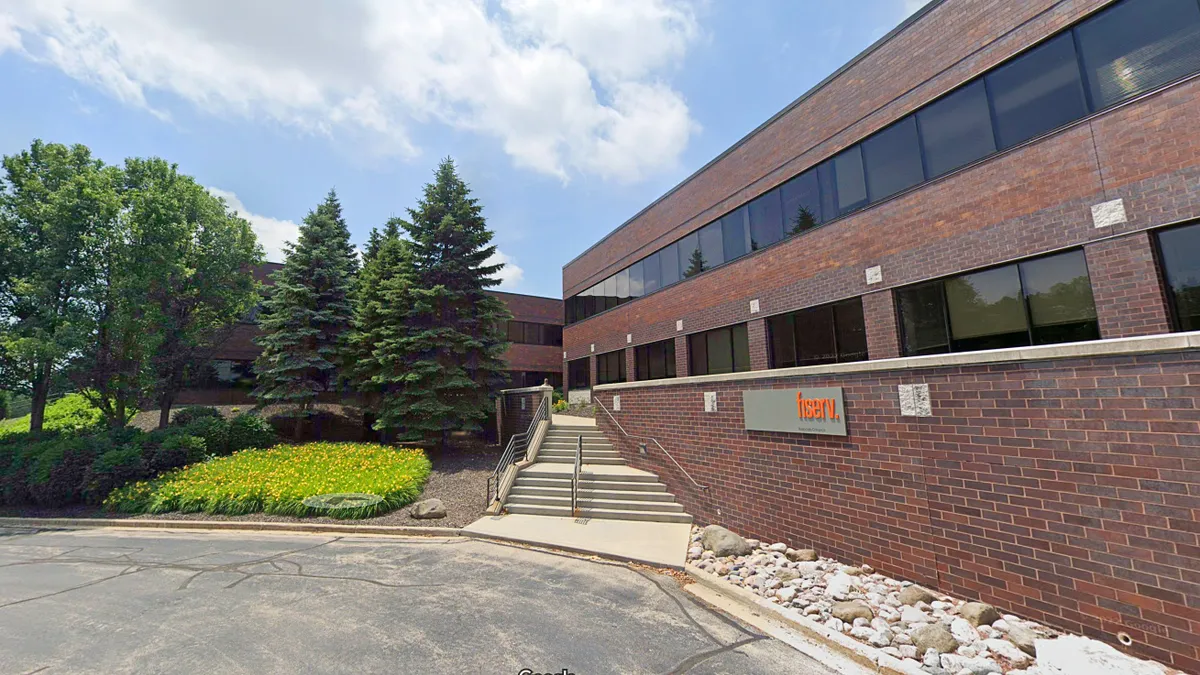Dive Brief:
- Biometric authentication, tokenization and contextual commerce are “priorities” for Mastercard in spearheading digital growth, the card company’s chief digital officer, Jorn Lambert, told Bank of America analyst Jason Kupferberg, according to a report last week from the bank’s research arm.
- Such digital card technologies allow for ongoing “cash displacement,” the report said, adding that another such technology, contactless payments, now enable about 60% of Mastercard’s global transactions.
- “The evolution from hardware-centric to software-centric” point-of-sale has enabled Mastercard to grow to acceptance at 110 million merchants, up from 80 million two years ago, via payment facilitators and independent software vendors, the report said.
Dive Insight:
Purchase, New York-based Mastercard, the no. 2 U.S. card network behind Visa, is building out its ecosystem on both the merchant and consumer ends. The number of merchants that accept Mastercard has doubled over the past five years, Mastercard Chief Product Officer Craig Vosburg said at an investor conference in March.
On the other side of the equation, the company is using technology to give consumers and businesses more ways to use their cards, Vosburg said, according to a transcript of his presentation at the Wolfe Research conference provided by the company. That’s where increased use of technologies, including contactless technology, can play a role.
Similarly, web-based biometric authentication smooths the way to users accessing their card account and making purchases. Likewise, tokenization adds a layer of security for a cardholder in using credentials via a virtual token. Contextual commerce also increases card use, by tucking shopping options into everyday experiences.
Much of the opportunity for digital-based growth has followed the rise of electronic commerce, super-sized by COVID-19 leading consumers and businesses online for transactions. “Digitalization in the form of e-commerce and the proliferation of the gig/subscription economy have further increased the number of transactions running on MA’s rails,” the BofA report said.
Mastercard has benefited from the expansion of its network outside the U.S., particularly in emerging economies, and from technological innovations that allow more merchants to accept the card, William Blair analyst Cris Kennedy noted in an interview last week. For instance, Square’s development of the dongle years ago allowed a sea of small and mid-sized merchants to start accepting cards, he noted.
“That was kind of revolutionary in the way of who and what type of device could accept the card payment, and so that just drives the growth of, the secular shift of, electronic payments away from cash,” Kennedy said.
While those digital trends are benefiting Mastercard, they’re also boosting prospects for rival Visa. Based on U.S. purchase volume last year, Visa controlled 52% of the market while Mastercard was a distant 24%, according to a February report from industry research firm The Nilson Report. However, Mastercard increased its market share by about half a percentage point over 2021 while Visa lost about half a percentage point, the report showed.
A spokesperson for Mastercard declined to comment other than to reference Vosburg's comments.












